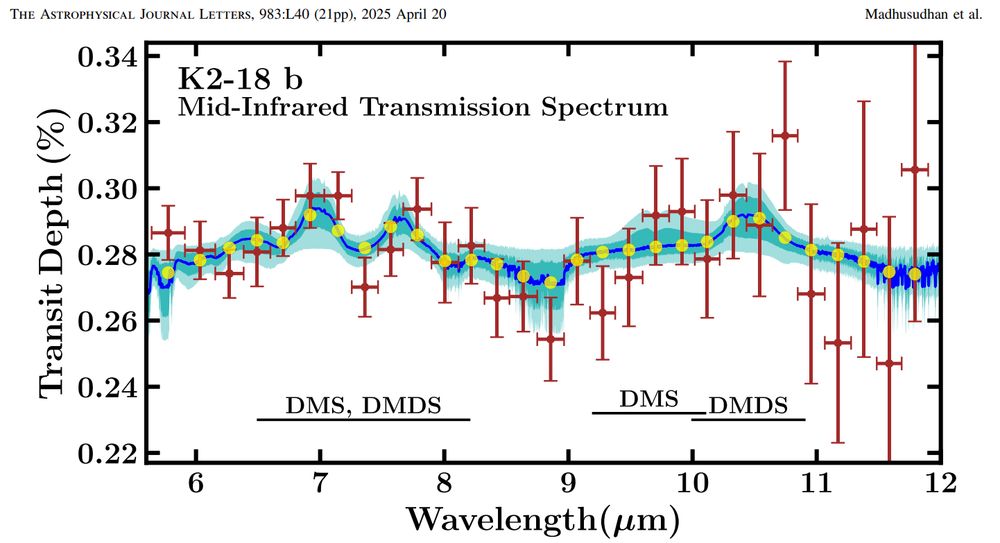- A new paper presents the first mid-infrared spectrum of K2-18b, using the MIRI instrument on JWST. The paper claims a 3σ detection of the biosignature candidate molecules DMS and/or DMDS (the 'and/or' is important). So how does this stack up? Madhusudhan+2025: iopscience.iop.org/article/10.3...
- The MIRI transmission spectrum of K2-18b shows multiple bumps and wiggles, which Madhusudhan et al. interpret as compelling evidence for the molecules DMS ([CH3]2 S) and/or DMDS ([CH3]2 S2). On Earth, these molecules are produced mostly by phytoplankton. But there are problems with the analysis.
- Most importantly, this is not a 3σ detection. In exoplanet atmosphere research, we use something called 'Bayes factors' (B) to express how confident we are in a spectral signal. • No evidence (B < 3) • Weak evidence (3 < B < 12) • Moderate evidence (12 < B < 150) • Strong evidence (B > 150)
- The Bayes factor for DMS and DMDS (both combined) in this paper is 2.62, which falls in the 'no evidence' category. We normally don't start using the word 'detection' until we have B > 150. So how did this get spun into a 3σ detection? (the next post is a little technical, bear with me!)Apr 17, 2025 16:08

